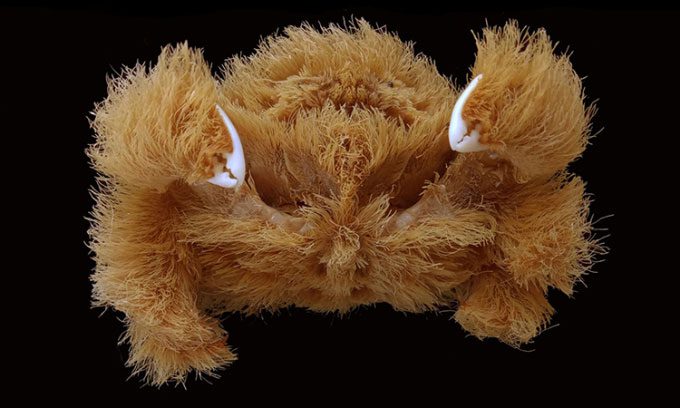A Crab Covered in Fluffy Brown Hair Identified as a New Species of Sponge Crab.
An Australian family discovered a peculiar-looking crab washed up on the beach near the town of Denmark in Western Australia, as reported by Live Science on June 30. They sent the specimen to Andrew Hosie, the curator of crustaceans and worms at the Western Australian Museum. Hosie identified it as belonging to the family Sponge Crabs (Dromiidae), but noted that it appeared quite unusual.

A hairy crab discovered in Western Australia. (Photo: Colin McLay)
“The soft fuzz is a characteristic that helped us identify the species. Sponge crabs are usually covered in hair, but they resemble more of a felt or plush texture rather than this extremely fuzzy ‘coat’, said Hosie.
Members of the Sponge Crab family use their sharp front claws to collect pieces of sponge and Ascidiacea—a group of filter-feeding organisms, such as sea squirts—and then utilize their specialized hind legs to hold these fragments on their backs. The accumulated debris forms a type of camouflage for the crab, making it harder for predators like fish, octopuses, and other carnivorous crabs to detect them. Sponges can also secrete toxic substances that make the crabs less appealing to predators.
Upon receiving the fuzzy crab specimen, Hosie contacted marine biologist Colin McLay, a former associate professor at the University of Canterbury, who has studied Sponge Crabs for decades. McLay confirmed that this is a new species of crab.
The new crab species has been scientifically named Lamarckdromia beagle in honor of the HMS Beagle—the ship that brought the famous English naturalist Charles Darwin to Albany, Australia, in 1836. “This journey is believed to have profoundly influenced Darwin, guiding him on the path to developing the theory of natural selection,” Hosie stated. Additionally, the name “beagle” is fitting for the new crab species as its fluffy brown hair resembles the distinctive markings on the face and shoulders of the beagle breed.




















































